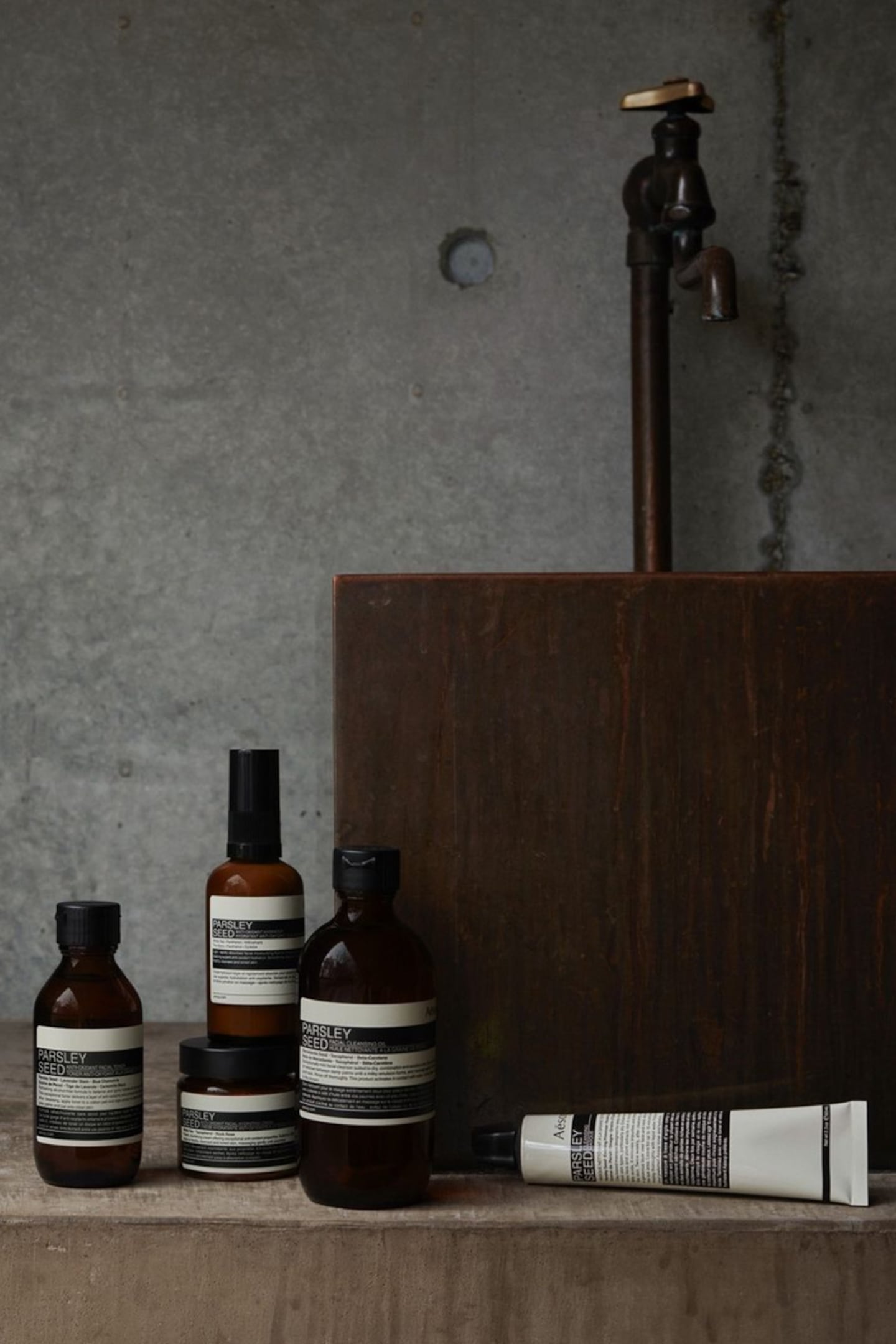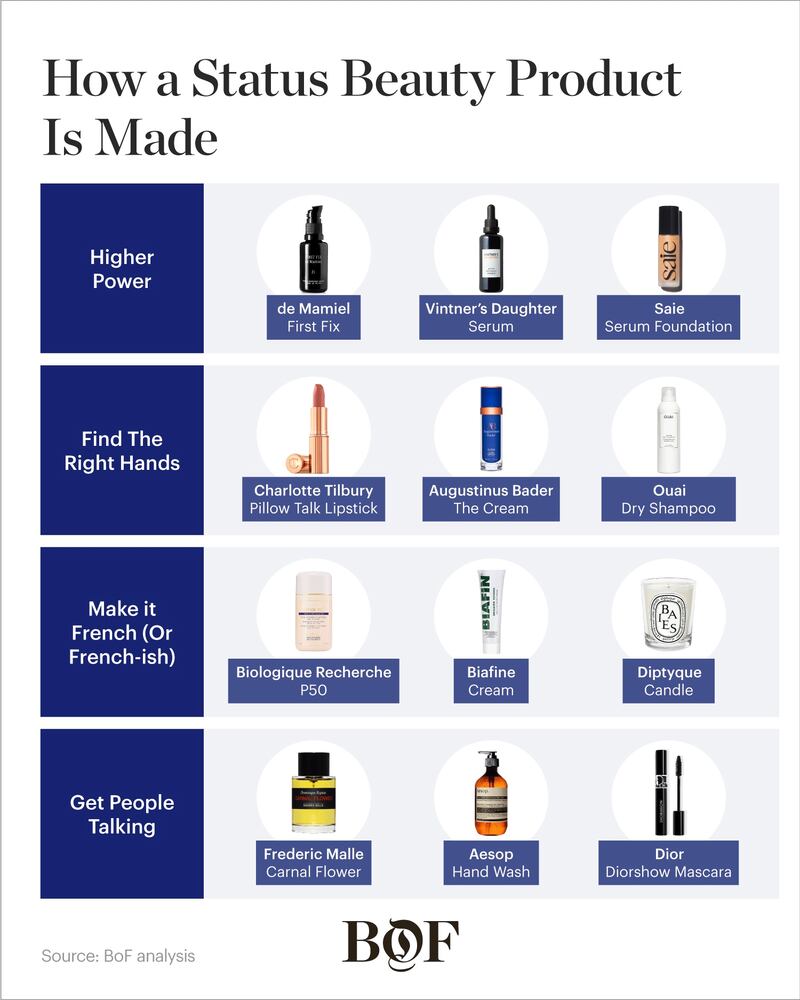
The Business of Fashion
Agenda-setting intelligence, analysis and advice for the global fashion community.

Agenda-setting intelligence, analysis and advice for the global fashion community.

To call the Aesop’s Resurrection Aromatique Hand Wash a hand soap feels somehow rude, if technically correct, like saying “Subway employee” instead of “sandwich artist.”
The ubiquity of the product — in upscale restrooms, in TikTok videos, in the pleasure centres of human brains that sparkle when encountering something obviously luxurious — is no anomaly. Soap is now a status object, along with candles, moisturisers, lip pencils and just about any other beauty or beauty-adjacent item you can imagine.
Chemically speaking, there is nothing extraordinary about Aesop’s hand soap. It’s made with plant-derived cleansing agents and synthetic conditioners, and smells like the treatment rooms of far-flung jungle spas. In terms of ingredients, it is essentially the same as what you find on the label of most hand washes. And yet its presence sink-side sends a clear message to those calibrated to receive such a message: The owner of this bathroom has taste.
“Suddenly chic restaurants had chic soap, and then chic homes had chic soap,” said beauty writer Chloe Hall. You use it to represent who you are, what you like, your values. It’s an easy form of signalling.”
ADVERTISEMENT
How a beauty product transcends its original value proposition (for example, to cleanse hands of dirt and germs) can seem mysterious. A high price can signal status for a product, but it’s often not the primary reason an item becomes a taste token. Sometimes it’s because said product has an elegant aesthetic or packaging, the kind that inspires copycats, or it exudes a magical quality for the end user. Other times it is because of expensive marketing and the kind of word of mouth that money can’t buy, like celebrities or non-celebrities with “cool” factors. A vague French connection doesn’t hurt.
Simply checking off one or many of these attributes doesn’t turn an ordinary product into a cult object. But when it works, it makes bank: Last month, Aesop’s owner Natura sold the brand to L’Oréal for $2.5 billion dollars.
Designer hand soap is one of many examples of a taste token, but it’s also a useful framework for seeing how quotidian goods become aspirational.
In the late 19th century, Proctor & Gamble initiated what was perhaps the world’s first modern beauty marketing campaign for Ivory soap. (It was inspired by the ivory palaces in a church psalm). An Ivory soap ad from 1900 showed society women having tea, which read: “The shimmering whiteness of sparkling linen, the glow of shining silver… express more than culture and good taste.”
Those same tactics work today.
“A lot of successful beauty products tap into that feeling of virtue,” said Jean Godfrey-June, beauty director of Goop. “It’s about things [that seem] handmade, good for the body, good for the planet. It’s natural, maybe it’s a little bit magical.”
She mentions De Mamiel, a British skincare line, by way of example. In its marketing, the brand emphasises a small-batch, botanically-infused quality.
“At the heart of the brand is the belief that everyday moments can be elevated to something more meaningful through the power of effective and hardworking products,” De Mamiel’s website reads.
ADVERTISEMENT
The products are expensive. Most status products are, for reasons that have as much to do with ingredient sourcing as shelf appeal.
But a taste token can be inexpensive, if it can prove its exclusivity in other ways.
There is a simple word for a very important quality that is both critical to the making of a status product and impossible to describe: It has to be cool.
According to Jade Angel, a high school senior in Brooklyn, it’s not about the cream, but the face that wears the cream.
“I’m never even buying a product. I’m just constantly buying a person that I want to be,” she said.
Makeup from the brand Charlotte Tilbury, whose eponymous founder built a reputation for making up Hollywood actresses, and whose marketing makes frequent use of her star connections, is as good as the glowy cheekbones it sits upon; Ouai, a haircare label founded by longtime Kardashian stylist Jen Atkin, feels similarly aspirational to Angel and her friends.
Prior to launching luxury skincare line Augustinus Bader in 2018, professor and physician Augustinus Bader and French financier Charles Rosier flew to Hollywood for meetings with celebrities and previewed the line at Paris Fashion Week. Actress Melanie Griffith became a lynchpin of its success. She propagated the brand into influential networks (Courteney Cox and Gwyneth Paltrow became fans) and then Augustinus Bader was left to grow.
George DeTitta Jr., the set decorator for HBO’s Succession, doesn’t exactly remember how a bottle of The Cream ($290), the line’s hero product, made it into the bathroom of the prodigal failson Kendall Roy in season three, but is confident it had narrative purpose.
ADVERTISEMENT
“My assistants always know who we are shopping for and therefore shop for the appropriate accessories,” he said via Linkedin message. “Hard to cheat with the well-to-do.”
Of course, Kendall uses Bader. To anyone caught in the overlap between Succession’s viewership and Bader’s marketing, it made perfect sense, and provided a briefly intoxicating moment of storytelling.
Even with increasingly progressive attitudes toward inclusivity and diversity, it’s uncomfortably true how much of the beauty conversation trends toward Eurocentric beauty ideals. There was a time not so long ago when the habits of French girls — or a kind of French girl, who was probably white and built like a supermodel — served as an endless font of inspiration.
This period has largely passed, according to Google Trends — we hit peak French Girl Beauty between 2004 and 2007 — but France’s grip on our vision of luxurious beauty products has not budged.
There’s Diptyque candles, which at one point you could only buy in France; Biologique Recherche skincare that you can only buy in approved Biologique Recherche spas, which, at one point, were all in France. French ancestry is legible in even non-French products (Resurrection Aromatique) and brands (Glossier being pronounced gloss-ee-yay).
But cheap can be equally chic.
“I was watching a prominent beauty influencer do this French drugstore haul recently,” Hall said, “and those videos do numbers. It’s like imported silk. These are drugstore products, but because of that lack of accessibility, it kind of adds this, ‘If you know, you know.’”

Biafine and Créaline are popular French drugstore staples, whose praises have been sung by the fashion editors and beauty professionals who regularly congregate in Paris and later export their advice to the rest of the world.
“This is important: do you know about Biafine?” stylist Carlyne Cerf de Dudzeele told Emily Weiss for Into the Gloss in 2012. “It is the best thing in the world. This is one of those things that I bring back from Paris and I put in the fridge.”
Beauty runs on word of mouth. And, recommendations of this particular kind almost always invoke intimate details.
“If someone’s wearing a dress that looks good on them, you might see it and think, ‘Ok, that looks good, I’m going to buy it,” said Godfrey-June. “What about a tub of white cream? That recommendation has to feel personal.”
The internet, especially TikTok, has made it so that those personal recommendations now have scale. At one point, knowing what Resurrection Aromatique meant was insider knowledge; now it can suggest that someone knows a little too much. One thing true of all status products is that it matters more to have it than to actually use it.
The “Aesop refill” TikTok trend that instructs users to buy Aesop’s hand wash and then refill it with cheaper, bulk soap, has more than nine billion views. In September 2022, Naomi Fullmer, a nurse, posted a video in which she encountered an Aesop bottle dispensing a bubblegum pink formula. “This is why I have trust issues,” she wrote. The video has over 30,000 likes. To those who know that Resurrection Aromatique is actually a colorless goo, the deception is clear. To others, it may as well be a series of unintelligible glyphs.
“I’m too poor to understand,” one commenter wrote. “Can someone explain to me?”
Excitement for its IPO is building, but in order to realise its ambitions, more acquisitions and operational expenses might be required.
In an increasingly crowded space, makeup brands that prioritise natural ingredients are finding new ways to get their message across.
Shana Randhava, Priya Venkatesh, Heela Yang and Robin Tsai will join Imran Amed and Priya Rao to identify the entrepreneurs shaping the future of the beauty industry.
By selling existing formulas under their own name, retailers can tap into the lucrative beauty market without investing in custom formulations. But that doesn’t mean the private label model is an easy win.